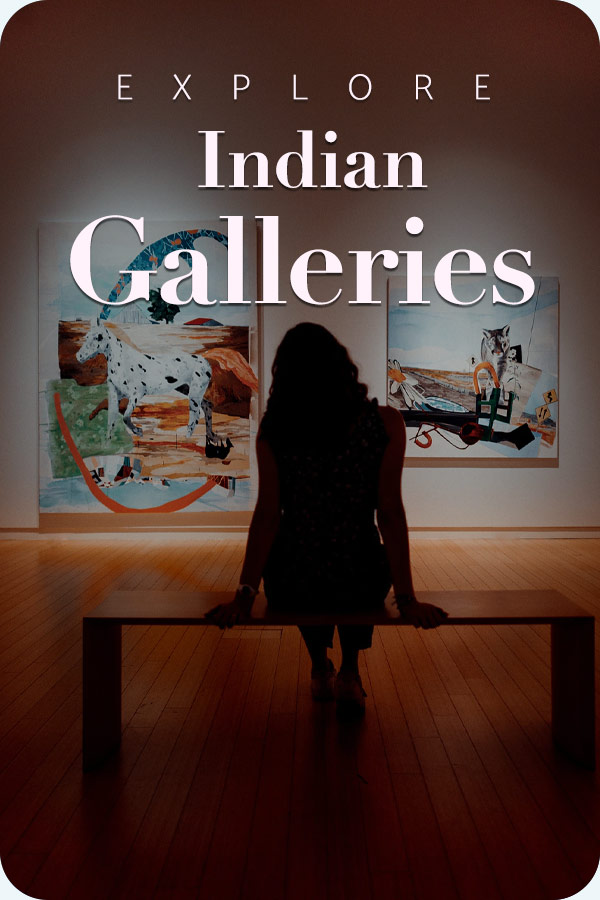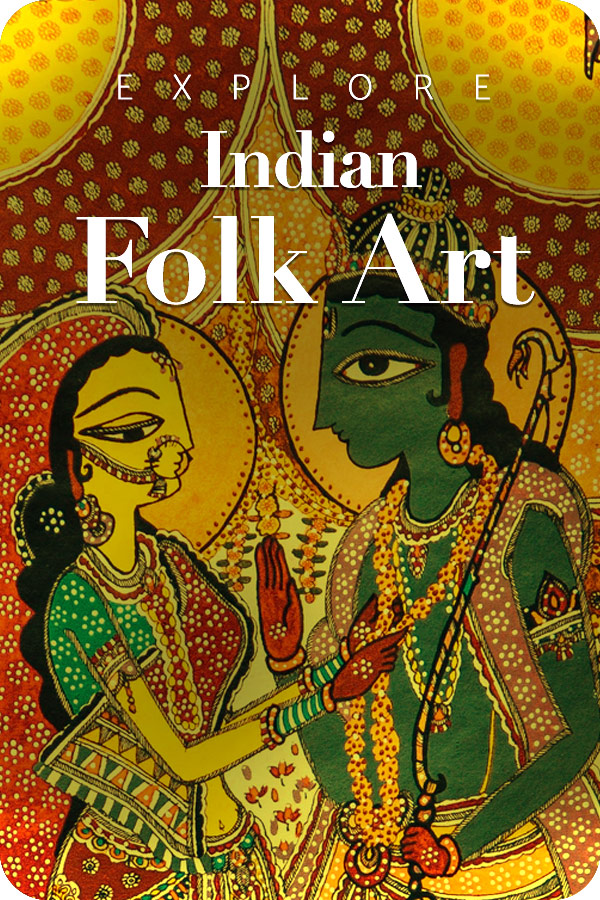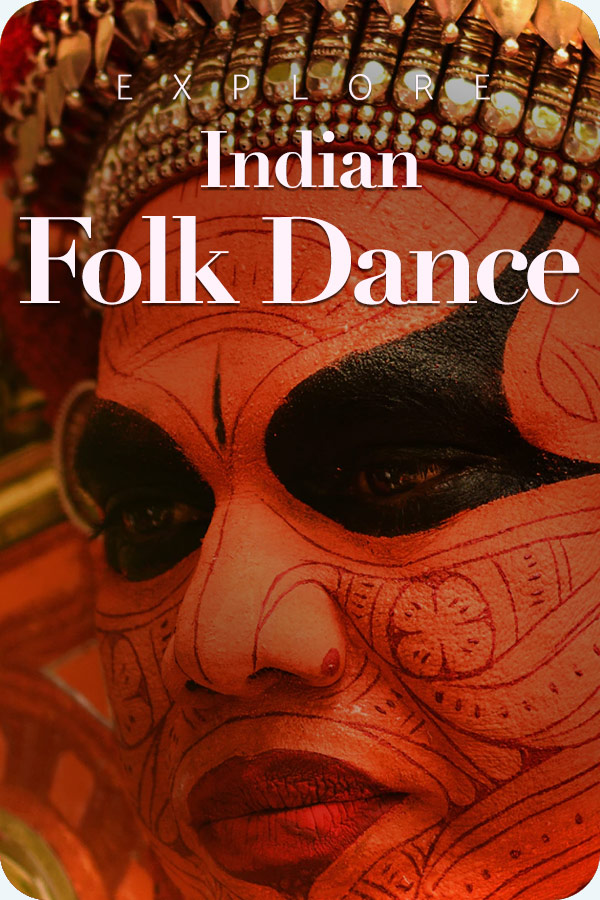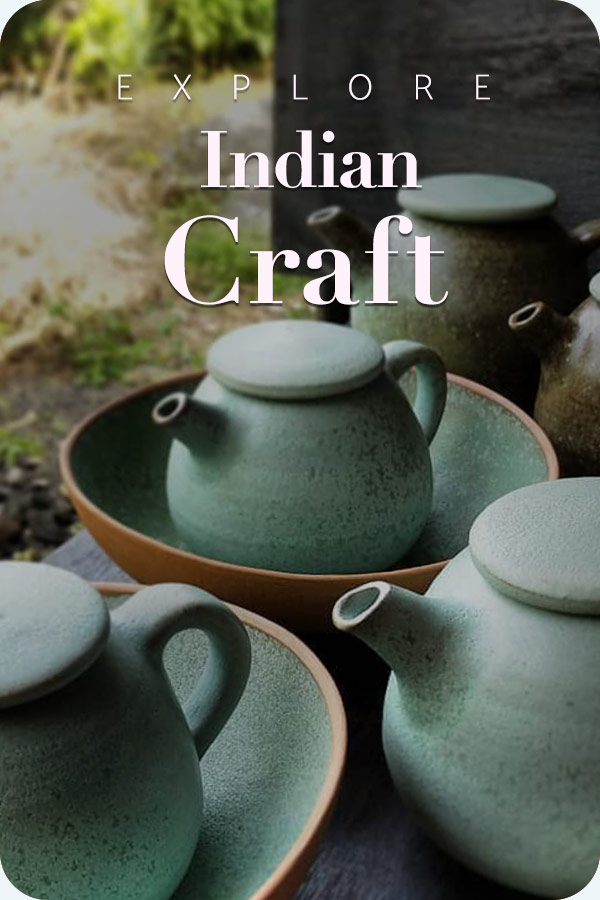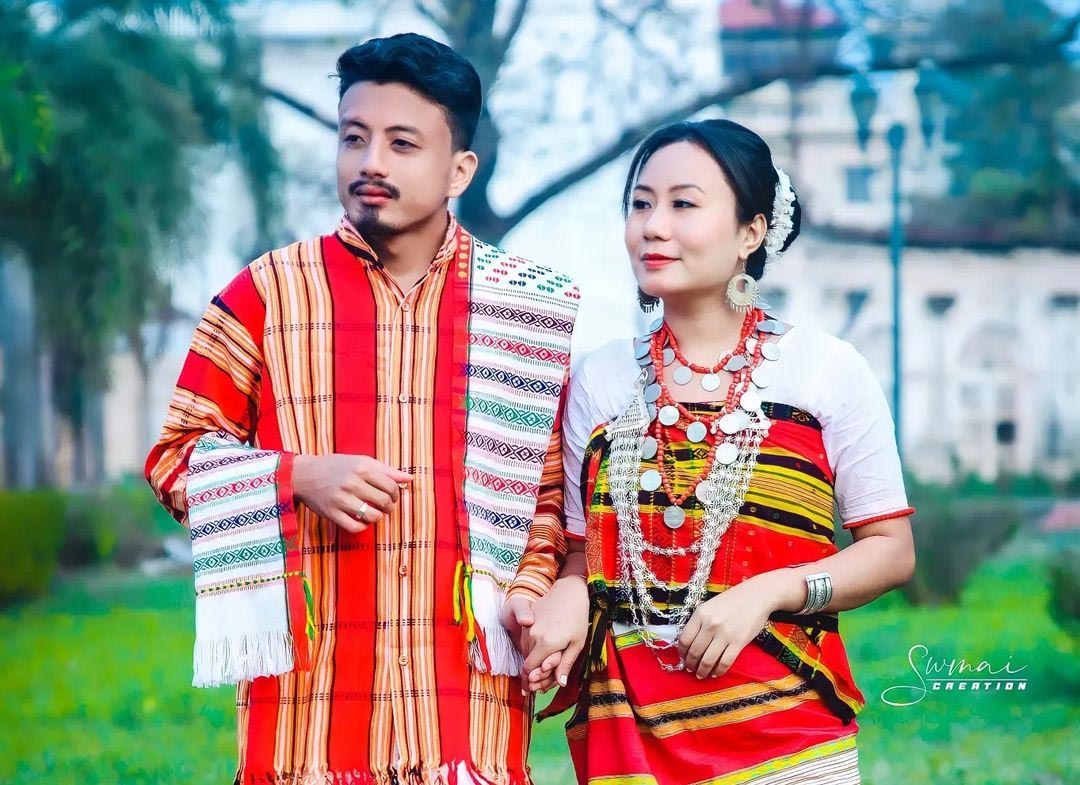
Encompassing an area of 10,491 square kilometres, delineated by the Radcliffe Line, Tripura is the third smallest state in India. Situated in the northeastern reaches of India, this state boasts rolling hills, winding rivers, and picturesque landscapes that captivate the senses.
At its zenith, the Tripuri kingdom was said to have included the whole eastern region of Bengal from the Brahmaputra River in the north and west, the Bay of Bengal in the south, and Burma to the east during the 14th and 15th centuries AD. According to textual references, the ancient period of the kingdom started around the 7th century when the Tripuri kings ruled from Kailashahar in North Tripura. They used “fa” as their title, a word taken from the Kokborok “pha,” which means “father” or “head.” It was in the 15th century that the kings adopted the title of “Manikya” and also shifted the capital to Udaipur (Hitherto Rangamati) on the banks of the river Gomati. The first Manikya was Maha Manikya, who took the title in honour of a historic victory in a war with Bengal.
Christening the Place

The etymology of “Tripura” has various roots. Ancient texts suggest the name “Tripura” may derive from the Asur trio (Tarakaksha, Vidyunmali, and Kamalaksha) or the three castles they constructed (Tri = three, Puries = castles). In the opinion of K.C. Singh, the term is derived from the root word “TWIPRA”, combining two words, “TWI” meaning water and “PRA” meaning near.
The more recent name, Tripura, was not the forever label of the place. The Aryans christened it “Sumba” while the Bishnupuran referred to it as “Kirat desh”. Maharajoang, the ancient historical book from Brahmadesh (Myanmar), referred to the region as “Patikara.” The ancient Arakanese text Rajoang calls it “Khuratan”. The Manipuris named it “Takleng,” and Al-Biruni called it “Jajnagar”. The place was named “Mughlan Tripura” during the Mughal era, and “Hill Tipperah” during the colonial period.
The Indigenous People
As per the order of the President of India in 1956, the tribals of Tripura are classified into 19 scheduled Tribes. Each of these communities is ethnically homogenous, with variations existing in their languages and dialects. Tripuris, among all, are the most influential ones. Interestingly, the Tripuris, Deshi Tripuris, Jamatias, Noatias, and Riangs are collectively labelled as the “Kshatrias”.
The Tripuris
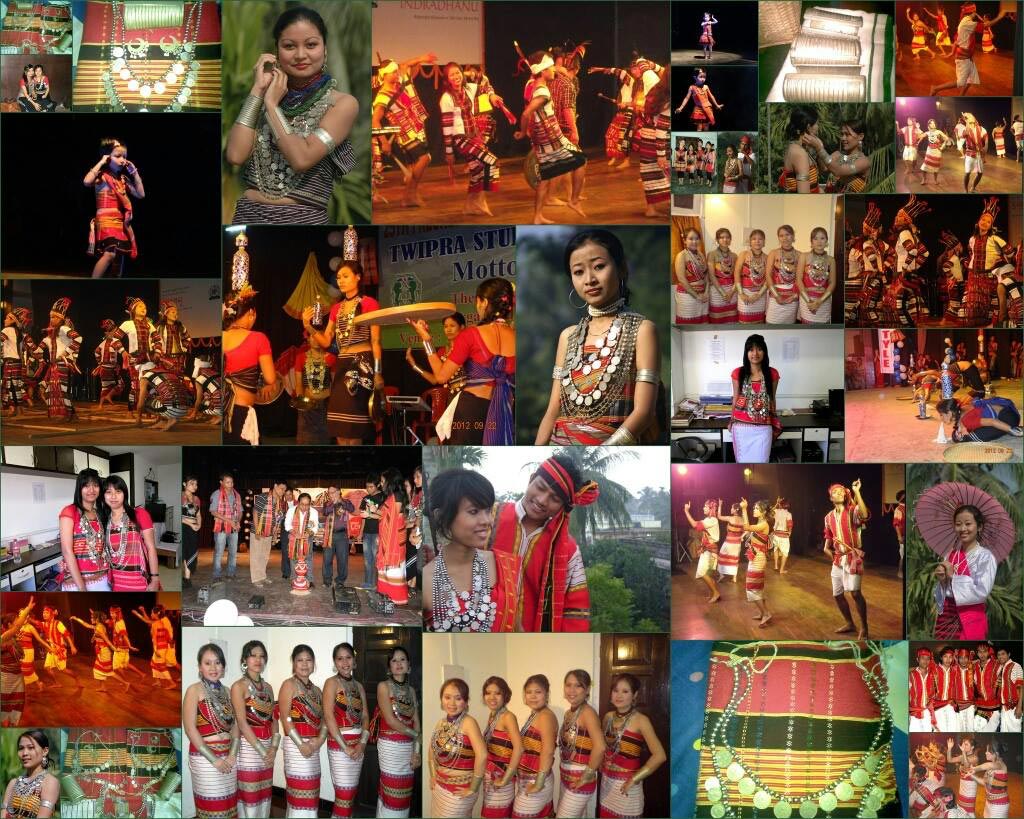
Belonging to the Tibeto-Burman race, they form the largest community in the state, and are also known as Tiprasa. Their surname, “Debbarma,” was bestowed upon them by the king. Traditionally, they reside in ‘Tongs’ on hilltops. Their spoken language is Kokborok. They originally migrated from the upper parts of the Yangtze and Yellow Rivers in present-day western China in 65 AD. They practice Jhum or shifting cultivation on hill slopes. Their staple comprises rice, with pork, chicken, dried fish, and vegetables, and they are also very fond of alcoholic beverages, with most households brewing their own fermented drinks. The institution of marriage in this community has two classifications: Hiknamani (by mutual consent) and Kaijagmani (negotiated marriages where parents play a crucial role). In fact, the practice of offering a bride price is quite prevalent. Widow remarriage is common, divorce is recognized, and instances of child marriage are also traceable. The community, which originated from the admixture of Tripuris and Bengali Hindus, is known as the “Deshi Tripuris”; they are mostly Vaishnavites and also venerate Shakti.
The women of this community weave garments such as Dubra (skirt), Pachhra, and Saris, using a loom. The upper body breast cover is known as Rias or Risha, and is adorned with intricate patterns. The Tripuri people are equally fond of jewellery, typically crafted from silver, silver coins, beads, and seeds of the Ramkala plant. Originally, their faith was animistic. However, with the dissipation of brahmanical influence, the Tripuris syncretized their faith with Hinduism, which is distinctively evident in their worship of the Chaturdash Devata. Major festivals include Kharchi and Ker puja. There exist two types of priests in the community, the Brahmin pandits and the tribal Ojhas or exorcists, also known as ‘Achais’. The Tripuri high priest is called ‘Chantai’.
Jamatias
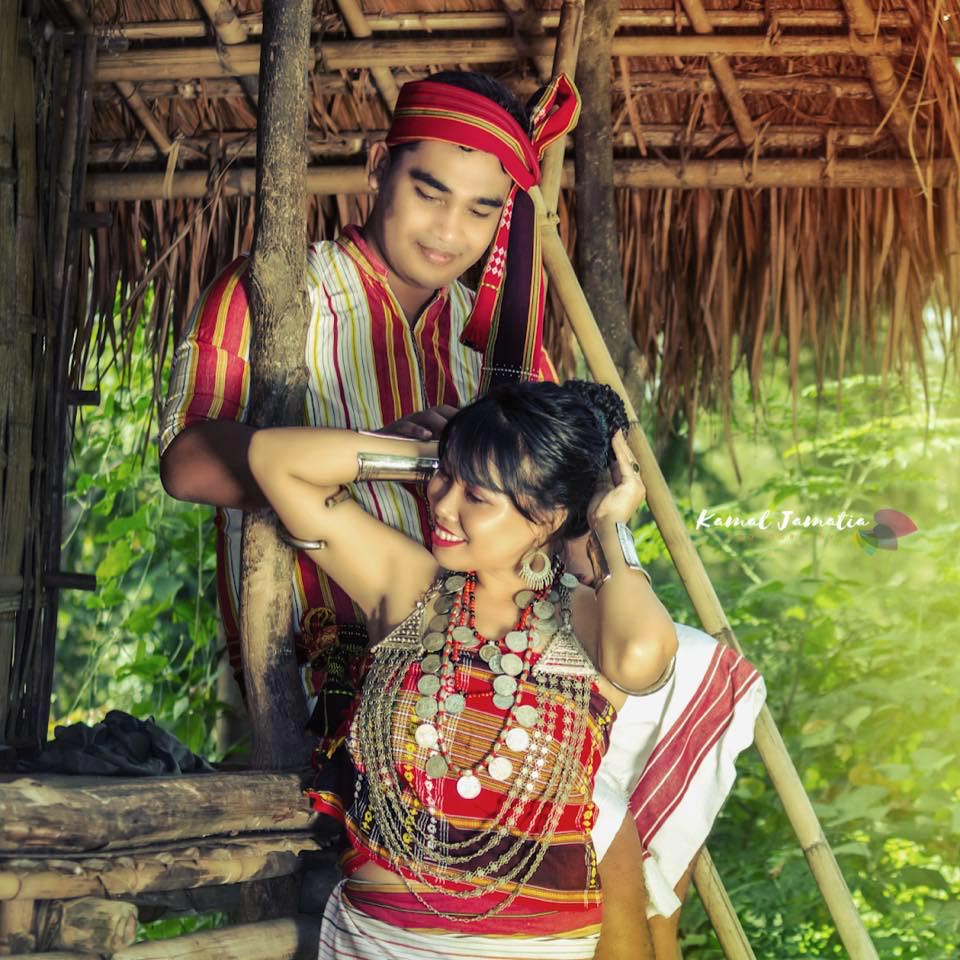
Etymologically, the term is derived from “Jamat”, meaning an assemblage in Bengali/Urdu. According to K.C. Singha, they are a pure branch of the Tripuris. They are the third-largest community in the state. They are economically advanced and, depending on their faith, they are primarily divided into Vaishnavas and Saktas. They formed the chief army of Tripura in the ancient period. On the pretext of their military service to the king, they were exempted from Ghar Chukti or House tax and were also given special privileges. Many affluent people from the community practiced polygamy. Divorce is permitted, and widow remarriage is also recognized, and both parties offer “Langi”, a sweet liquor prepared from mami rice.
An interesting feature of the tribe is that “sati” was practiced, even though widow remarriage was practiced, and, practically, the widows were never subjected to social ostracization. This conflicting and juxtaposing practice is pretty difficult to define.
REANGS
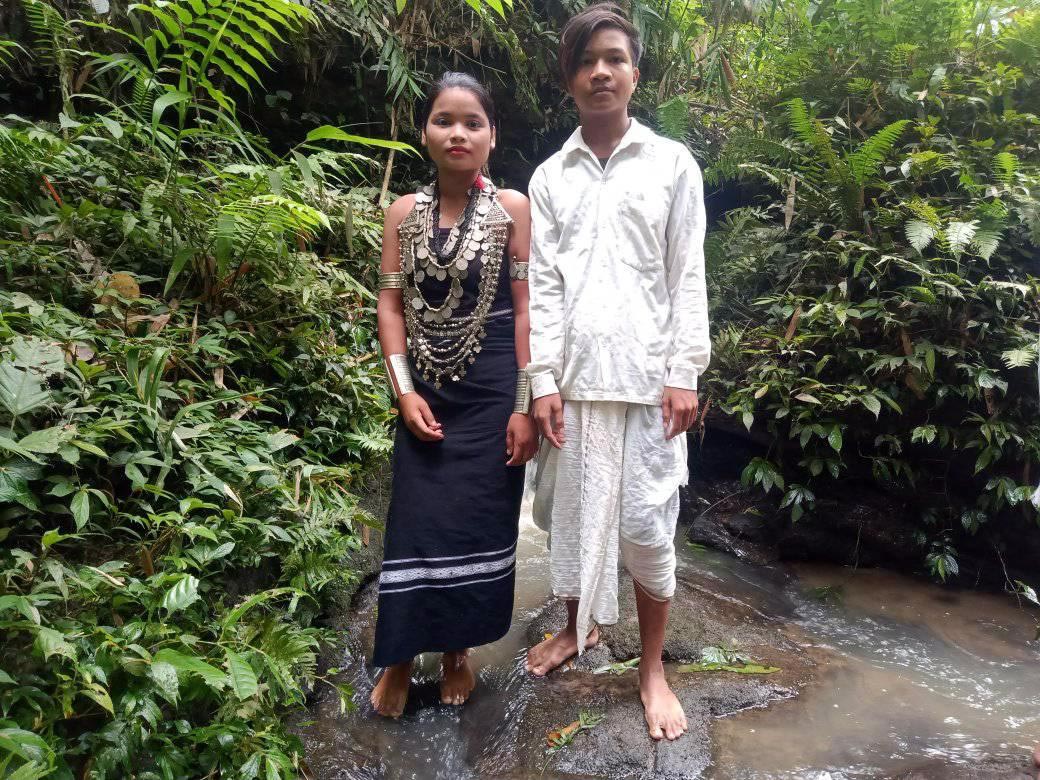
The primitive identity of these people was “Bru”. Reang is one of the 13 sub-communities of Bru. The people of this community are believed to have migrated from the Shan Kingdom of Burma during the reign of Ratna Manikya I in the 14th century, who is also mentioned to be of Bru origin. They are primarily of Mongoloid descent, and their dialect belongs to the Tibeto-Burman family. Music and dance are integral to their culture, and their traditional attire is simple. The men wear a hand-woven loincloth and also wrap their upper body; the women wear a ‘Rignai’ or ‘Pachhra.’ Parallel cousin marriage is prevalent. In their tradition, no man or his wife could be called by their names if they had become parents; they are rather identified by the names of their children. Their religious pantheon is intimately aligned with animism, though many worship Vishnu and Kali. They are known for their “Hojagiri” dance, where young girls balance on earthen pitchers. They also sang “Dawa” while practicing jhum. They use a plethora of musical instruments, ranging from flutes to drums.
The Uichoi tribe of Tripura has a common identity with the Reangs, as both belong to the mongoloid stock. Their language is pretty similar to Kokborok.
Chakmas
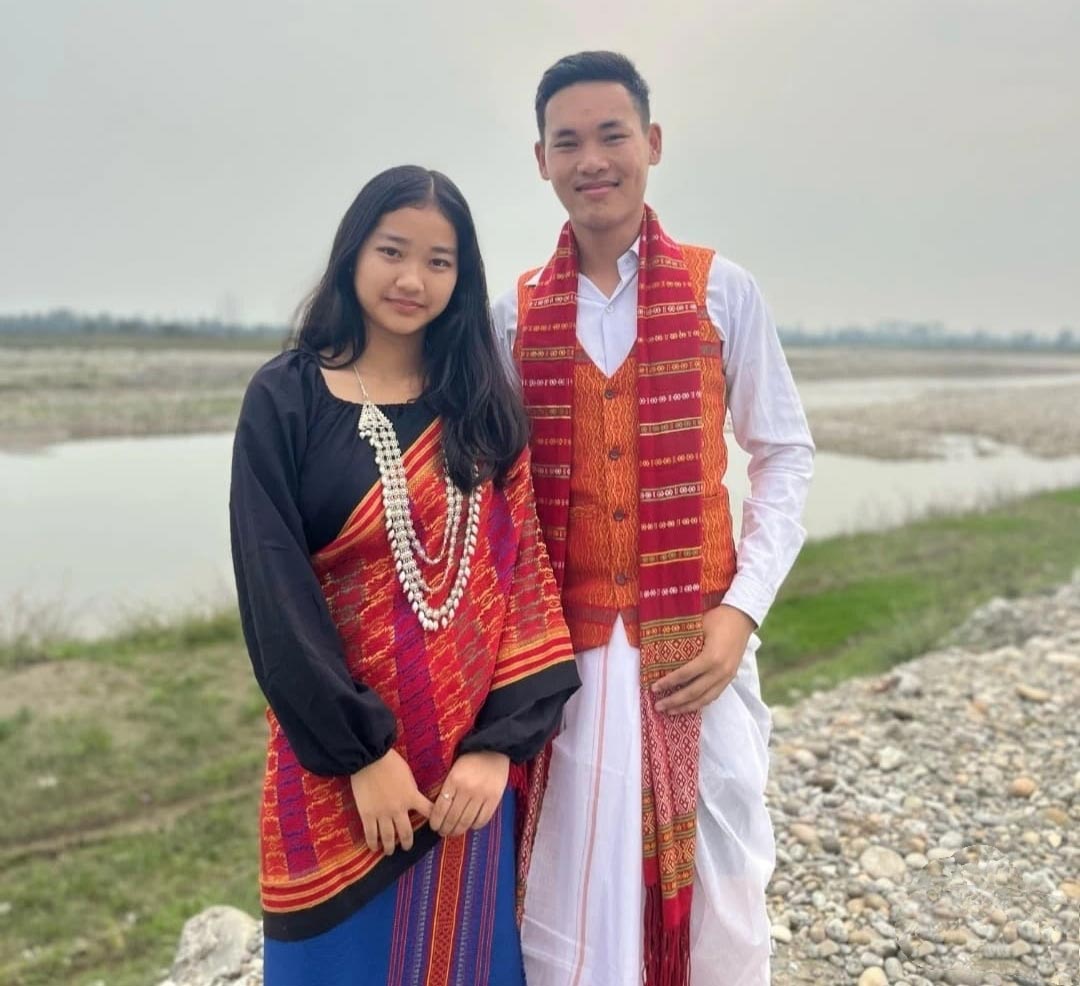
People of the Chakma tribe are of Tibeto-Burmese origin and are believed to be the descendants of Arakanese migrants, with their language belonging to the Aryan group. The Burmese people call them Tsak or Thek, the Kukis call them Chhakhuma, and the Bengalis know them as Chammua. And the people themselves call the community Changma. Their traditional attire exhibits similarities with the Burmese and Shan ethnic groups. The women wear breast covers called “Hadi” and loincloths called “pinon”; men wear ‘kani’ (loincloth) and shirts called ‘shilum’. Their ornaments closely resemble those of the Bengalis, and their faith is Hinayan Buddhism. Their traditional ethnic chronicle is christened as the Bijak. Their manuscripts were originally written in Bamunih (Brahmi) on palm leaves. “Bizhu” is their most popular festival, which is observed for three days.
The tribe has its own traditional governance structure called “Marma Raj”, which is basically a council of elders responsible for mitigating disputes and maintaining social harmony. Interestingly, during the partition of India in 1947, the Chakmas appealed to senior leaders like Gandhi, Nehru, and Patel for the inclusion of the Chittagong Hill Tracts into the Indian Union, on the pretext of the CHT having a 98% non-Muslim population.
The Mogs
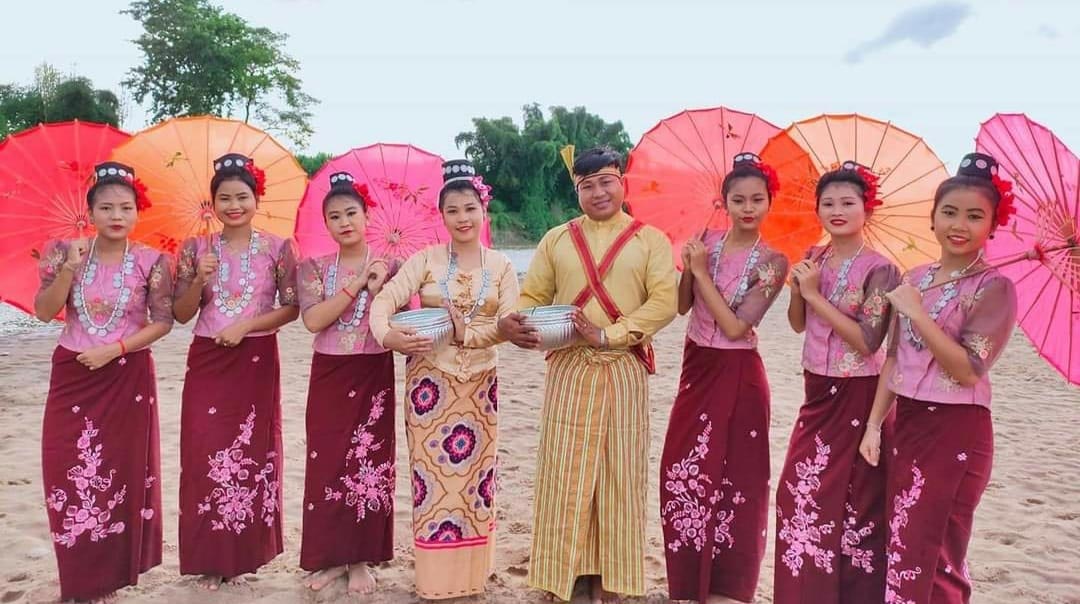
They too are of Arakanese descent and are known as Magh or Marma people, and are said to have settled down in Tripura in 957 AD. They have intimate ties with Burmese Buddhism. Their dialect resembles Burmese and Arakanese with slight variations in pronunciation, and their script is Burmese. They find mention in the Rajmala, the royal chronicle of Tripura. Like the Jamatias, they too were admitted into the royal forces. The women wear thabuing (loincloth) and bedeh is the blouse; men wear longi for lower covering, rangi, which is a shirt, and gongbong, a turban on their head.
The Noatias
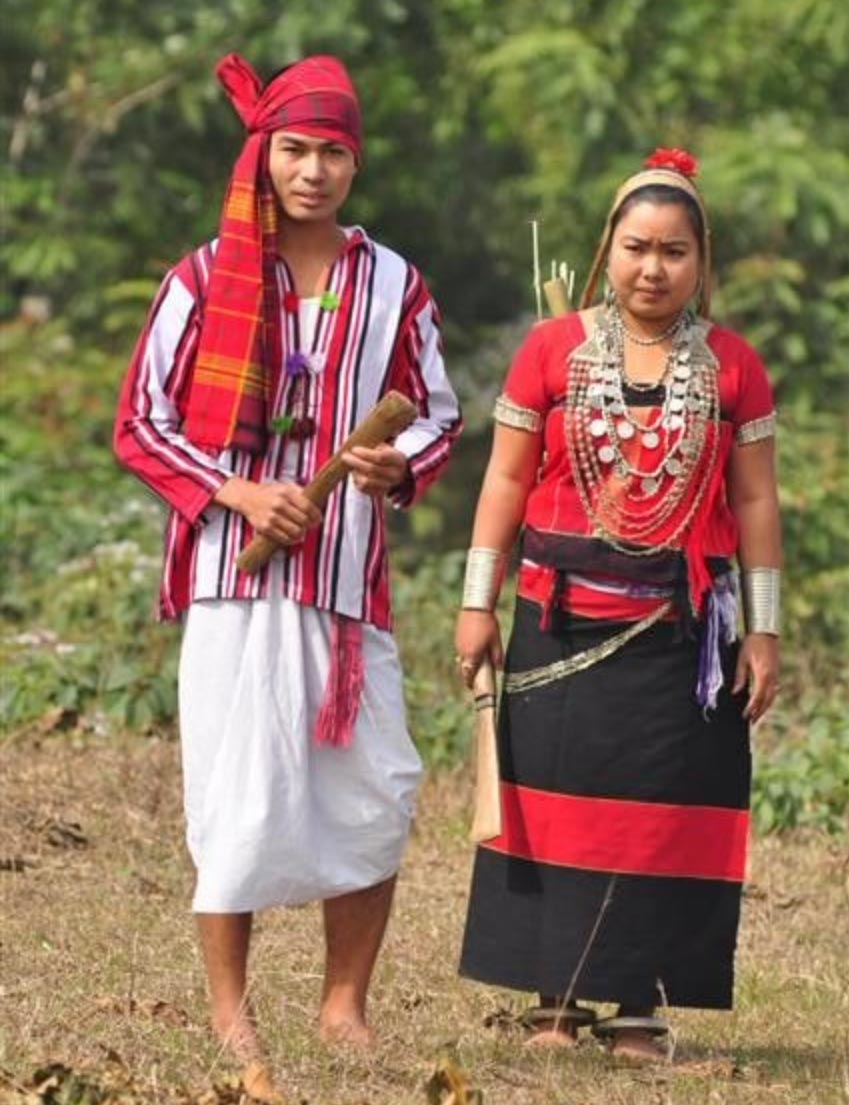
They are a hybrid race and are divided into eleven clans. They are also recognized as Nowa-Tripuri, meaning ‘newcomer’, and Katal, which also means new. Their language is Tipra or Murang, a dialect of Kokborok, and is also influenced by the Mogs and Chakmas. Traditionally, they are quite close to the Jamatias, but in the context of their funeral customs, it is more closely aligned with the Reangs.
Murasingh is a subtribe under the Noatias. Traditionally, the people of this community did not wear shoes except for special occasions. The Murasingh women are fond of ornaments and flowers, and wear kharu on their legs.
Halam

In the Halam language, “Ha” means soil, and “Lam” means owner; thus, it translates to owner of the soil of the earth. It is believed that the Maharaja has bestowed the title of Halam upon these people. The people belonging to this community call themselves “Hre-em” or “Hriam,” which literally translates to “man”. Ethnologically and linguistically, they belong to the old Kuki groups who accepted the suzerainty of the king of Tripura. The Kukis of Tripura are basically divided into Darlong Kukis and Rokhim Kukis. They are said to have migrated from “khurpuitabum”, located somewhere in south-central China. They are segmented into 13 ‘dafas’ (clans). The Halam people also practice the craft of dyeing with colours produced from flowers, leaves, herbs, and even stones.
Molsom is a subtribe of Halam and is referred to as “Morchhom”. The word “Mol” means hillock, and “som” means ten, i.e., the people of ten hillocks. When girls of this community attain puberty, risabomb is performed, where the girl wears the breast garment risa for the first time, and the girl comes to be known as a ‘nungak’, and her parents are allowed to arrange for her marriage. Kaipeng, Karbong, Bongcher, etc., are other subtribes belonging to Halam.
The Darlong tribe exhibits close affinities with Halams. In the Darlong community, every young girl gets her ear pierced, where tiny wooden plugs are inserted, which are successively replaced by bigger earrings called “tangka kuarbe”.
Other Tribal Groups
There exist numerous other tribal groups, including Rupini, Ranglong (exhibiting physical similarities to Halam), Lushai (they call themselves MIZO), Bhutia (Himalayan Tribe of Tibetan ancestry, once engaged as the Royal Army), Lepcha (Commonly known as Nepalees), Garo & Khasia (migrant tribes from Bangladesh and Meghalaya), Munda, Santhal, Orang, and Bhil. There is an endangered tribe of Tripura, known as the Chaimal or Saimar tribe, which displays linguistic affinity with Halams.
| Tribe/Group | Key Aspects & Distinguishing Features |
|---|---|
| Tripuris (Tiprasa) | Largest community; Tibeto-Burman origin. Speak Kokborok. Practice jhum cultivation. Surname: Debbarma. Dress: Dubra, Pachhra, Rias/Risha. Considered “Kshatrias” in collective identity. |
| Deshi Tripuris | Mixed lineage of Tripuris and Bengali Hindus. Mostly Vaishnavites; also honor Shakti traditions. |
| Jamatias | Third-largest community; a pure Tripuri branch. Historically served as the royal army (Jamat). Notable custom: Sati once practiced alongside widow remarriage. |
| Reangs (Bru) | Primitive identity: “Bru.” Migrated from the Shan Kingdom (Burma). Practice parallel cousin marriage. Famous for the Hojagiri dance (balancing on pitchers). Unique kinship: Parents identified by a child’s name. |
| Chakmas | Tibeto-Burmese origin; descended from Arakanese migrants. Language belongs to the Aryan group. Followers of Hinayan Buddhism. Festival: Bizhu. |
| Mogs (Magh/Marma) | Arakanese ancestry with strong Burmese Buddhist influence. Dialect and script similar to Burmese. Served historically in royal forces. |
| Noatias | Hybrid group; also called Nowa-Tripuri (“newcomer”). Speak a Kokborok dialect. Funeral rituals resemble Reang traditions. Subtribe: Murasingh. |
| Halams (Hre-em/Hriam) | Name means “owner of the soil/earth.” Linguistically linked to old Kuki groups. Divided into 13 dafas (clans). Perform risabomb ritual at puberty. |
| Other Groups | Include Lushai (Mizo), Bhutia (Tibetan lineage), Garo & Khasia migrants, Munda, Santhal, Orang, Bhil communities. Chaimal (Saimar) is an endangered tribe. |
Key Highlights
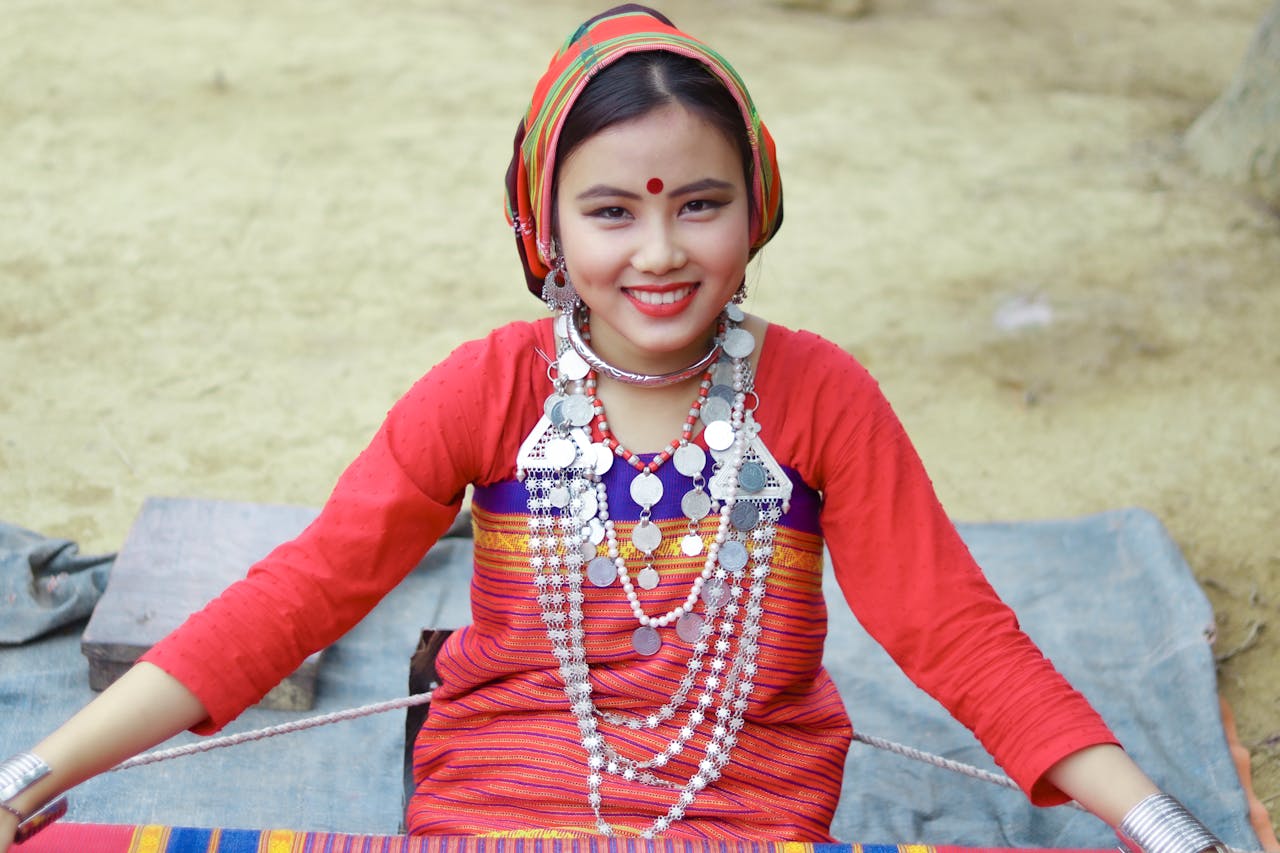
- Tripura is home to 19 Scheduled Tribes, each with distinct identities.
- Tripuris are the largest, historically powerful, and culturally influential.
- Reangs are celebrated for the Hojagiri dance and jhum-based lifestyle.
- Chakmas retain Buddhist heritage and a unique palm-leaf manuscript tradition.
- Jamatias historically formed the kingdom’s military backbone.
- Mogs and Chakmas reflect strong cultural ties to Myanmar and Arakan.
- Halam and its subtribes exhibit elaborate dyeing technologies and clan systems.
- Women across tribes play key roles in weaving, ornamentation, and ritual customs.
- Religious life ranges from animism to Hindu syncretism to Buddhism.
- Tripura’s tribal identity is rooted in migration, syncretism, and historical continuity.
A Unique Perspective
These tribal communities essentially function as custodians of ancient knowledge, traditions, and customs. Their histories deepen our understanding of India’s pluralistic mosaic, reminding us that identity is never static but forged through migration, cultural exchange, and negotiation with power. Furthermore, the history is marked by strategic alliances and geopolitical consciousness. As waves of modernity sweep across the hills, the challenge is not simply to “preserve” these cultures, but to allow them space to evolve on their own terms. In celebrating the voices of Tripura’s hills, we celebrate the enduring spirit of communities that have defined their world with dignity, craft, and memory. The future of Tripura lies in recognizing this complex, resilient, and syncretic identity as its greatest cultural capital.



